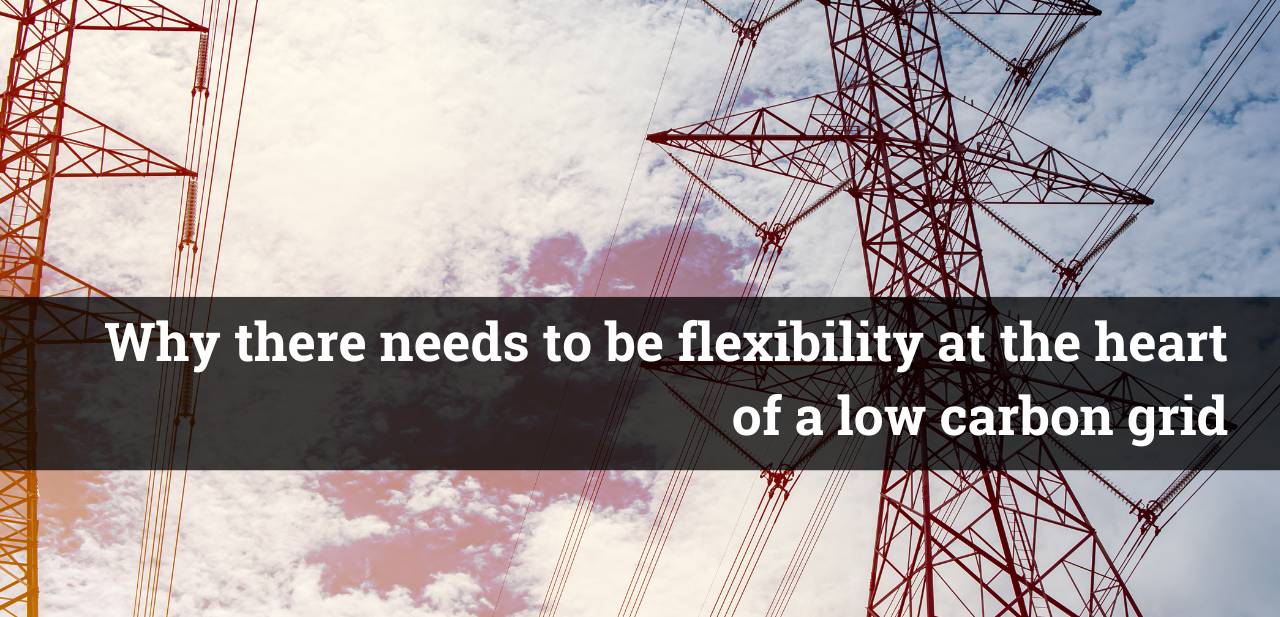
Why there needs to be flexibility at the heart of a low carbon grid
Unlike many products, the supply of electricity has to meet demand every second of the day without question. Maintaining this constant flow of electricity demands flexibility and when that involves the integration of zero carbon-generating assets such as wind and solar their unpredictability can be challenging.
Previously, flexibility could be achieved by altering the flow to steam-generating electricity turbines to allow an easily controllable electricity supply during demand peaks and troughs. But now more than 40% of electricity is generated by less controllable wind and solar.
Challenges of demand and supply
So how can you balance demand with supply from a source that is harder to control? If demand suddenly peaks you can’t demand the wind picks up to accommodate the additional need.
One solution is gas peaker plants – a spinning reserve asset that constantly burns gas to drive a steam turbine generator at a moment’s notice. Yet it takes us back to pumping CO2 into the atmosphere for what is a standby measure.
When there’s too much wind and oversupply then flexibility can be achieved by switching off generation at source by stopping the wind farm turbines. But this is wasteful and costly. The curtailment costs it incurs saw wind farms receive £300 million in 2023 NOT to generate electricity. Such costs are reflected in users’ bills.
The minimum prices set in generator contracts that help protect them regardless of market supply and demand fluctuations can also be costly. If generators overproduce the market price goes down – sometimes to zero – and if it continues to outpace demand then pricing becomes negative. In this case, the grid effectively pays users to take surplus electricity from the grid to stop it going to waste.
In 2023, excess wind generation led to a record-breaking 428 periods of negative electricity prices in 2023 – the equivalent of around half an hour a day of negative pricing over the year as a whole.
Taking advantage of the imbalance
It’s here that the need for flexibility is most apparent if businesses are to take advantage of this very variable generation source. In an ideal world, they could immediately scale up manufacturing and production to use cheaper electricity when it’s available, but this can threaten product quality.
Another more measured solution is to be paid through demand-side flexibility services – or demand-side response – to gradually scale up or scale down usage (demand) depending on energy availability.
But what about those businesses that can’t manage such a degree of flexibility and who have more rigid power needs? Why should they be precluded from what can be a very lucrative revenue stream?
The solution is to consider onsite energy storage that can store excess and bargain price electricity for later use, as well as protect businesses from rocketing prices in times of high demand and limited supply – such as the daily high demand 4-7pm evening slot.
Getting the balancing act right
If we are to forge ahead with wind and solar generation, we need to get the balancing act right. For every megawatt of wind or solar that we add to the system on the supply side, we have to balance it out with equivalent flexibility on the demand side. It’s key to operating a low-carbon or zero-carbon electricity supply and without it the system falls over.
But, while we can extol the virtues of energy storage we need incentives and policies to guide and realise the real value of storage and flexibility in the marketplace. Today that’s not the case. If we can’t develop markets to fairly reward flexibility at the point of consumption -whether we are dialling up demand or turning it down – then we run the risk of the continued replacement by the government of old gas-fired stations with new gas-fired stations without carbon abatement simply to keep flexibility in the grid. Where’s the sense in that?
Yet bring flexibility into the demand side of the grid, reward it fairly, and hey presto, you can get to a solution where the grid is flexibly balanced. And that benefits everyone.
